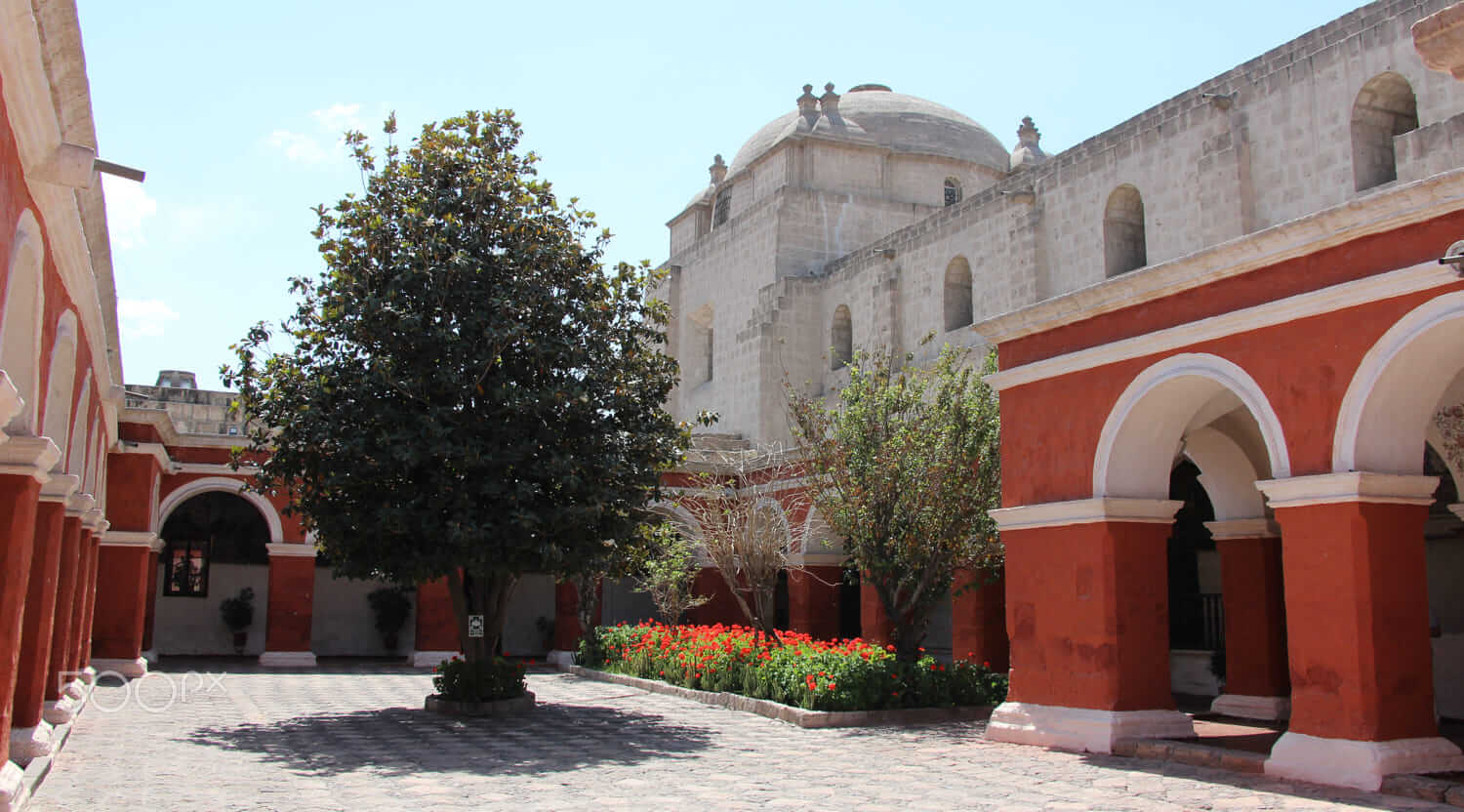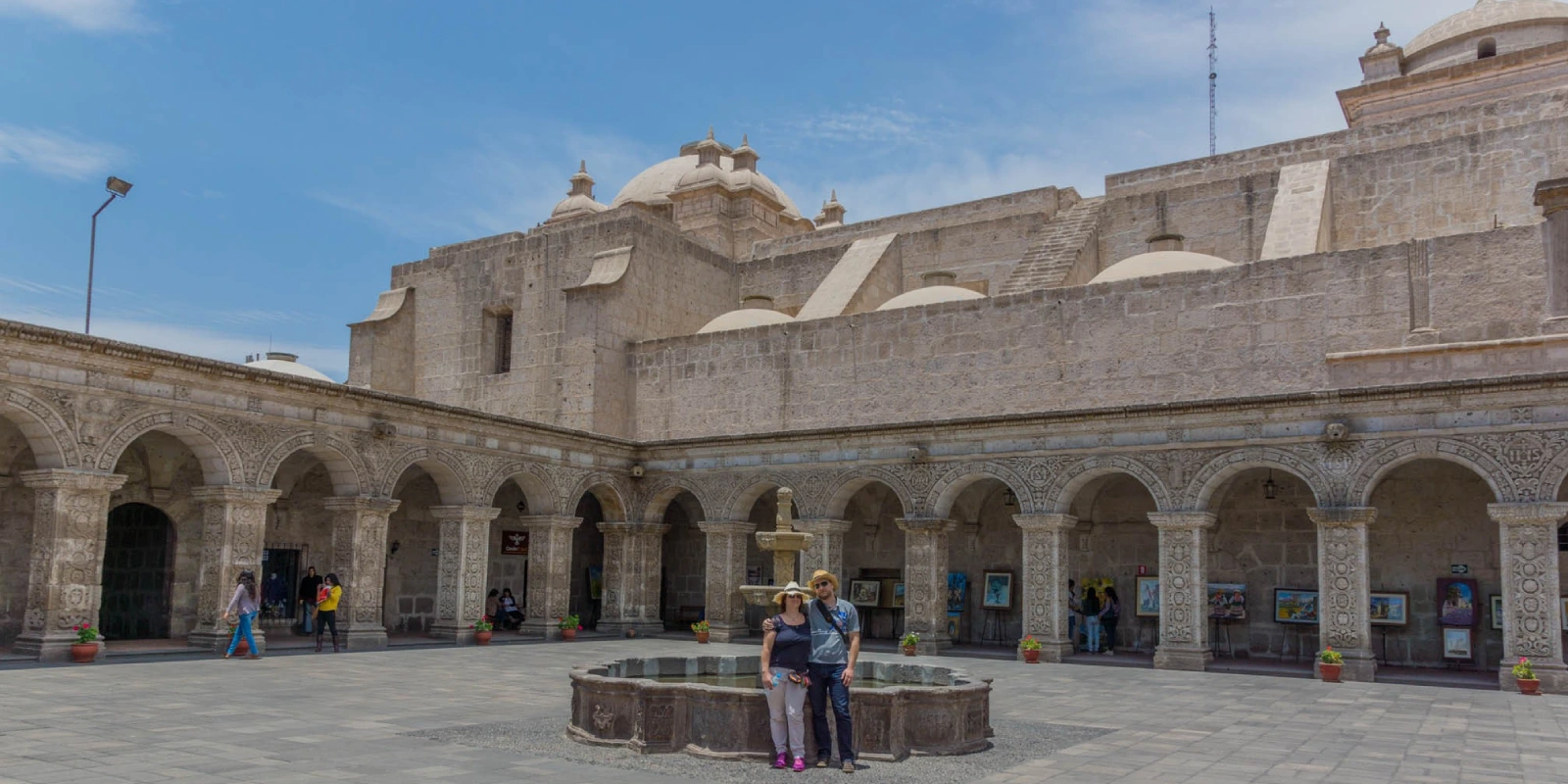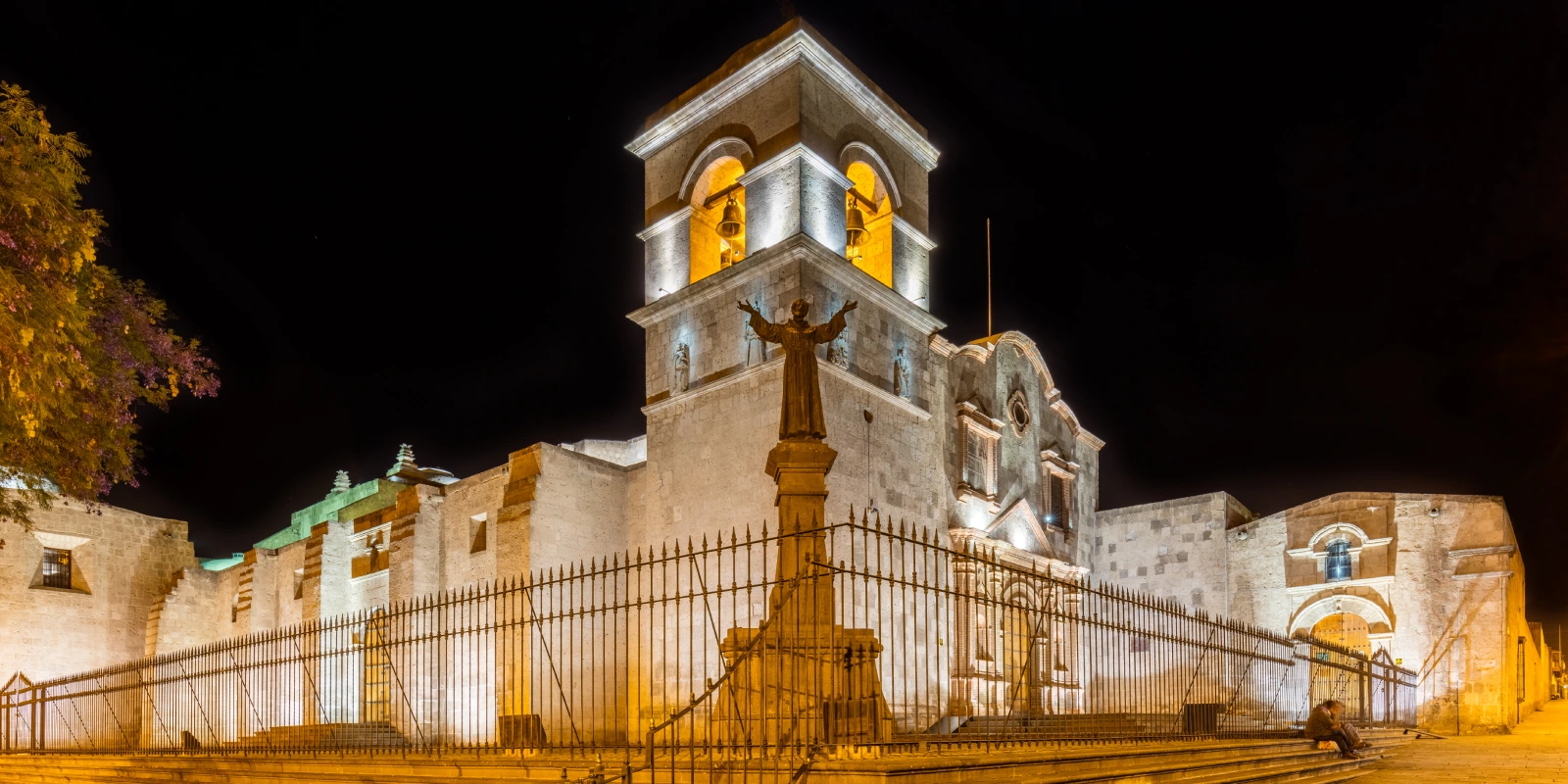Hello bloggers! Today we’re going to talk and write about the religious architecture of Arequipa in Peru, the famous white city at the foot of El Misti volcano. Learn more by reading our blog in English.

Religious architecture in Arequipa offers remarkable examples that make it unique in the history of Peruvian architecture.
Below, we present some constructive and formal elements that help identify its unique style within the city. Later, we will include some rural churches with notable construction.
Here is a list of the main monuments of religious architecture in Arequipa.
About the Religious Architecture of Arequipa:
1 – Santa Catalina Convent:
The Santa Catalina Convent is the most impressive architectural example of its kind. The preservation of its elements and artistic richness gives us an idea of its importance during the colonial period in Arequipa. It’s often said that a convent is like a city within another city.
This saying becomes even clearer in Santa Catalina. The photograph gives us an idea of what we mean. The streets, houses, and the church’s dome still preserve traces of their original significance.
The convent has several cloisters (interior courtyards). These are dominated by the robust shapes of its square-based pillars, whose corners have been chamfered. Above them rise semi-circular arches with decorative frames.
The structural design isn’t too different from other cloisters in Peru; however, there is a clear preference for solidity and resistance in the placement of its elements — something that perfectly fulfills the requirement of structural durability. Much of this is due to the stone material used, typical of Arequipa. Yet, the material alone does not explain the interest in a solid and austere architecture in Arequipa, especially when compared to its less decorated interiors.

2 – Church of La Compañía:
The Jesuit church features a richly decorated portal. The contrast between surface or planimetric elements and volumetric ones reflects a particular character of this and other churches in Arequipa.
As seen in the image, four paired columns support the base of a large portal. The columns rest on pedestals and are decorated from the base up to one-third of the shaft.
The cornice is continuously broken. A small niche (space intended for placing a sculpture) rises above the cornices at the level of the semi-circular arch and connects to the choir window, which also functions as a niche. In addition, the second level features broken pediments with pinnacles on each side. The portal is crowned by a trilobed-arch pediment.
The convent has several cloisters (interior courtyards). These are dominated by the robust shapes of its square-based pillars, whose corners have been chamfered. Above them rise semi-circular arches with decorative frames.
The structural design isn’t too different from other cloisters in Peru; however, there is a clear preference for solidity and resistance in the placement of its elements — something that perfectly fulfills the requirement of structural durability.
Much of this is due to the stone material used, typical of Arequipa. Yet, the material alone does not explain the interest in a solid and austere architecture in Arequipa, especially when compared to its less decorated interiors.
In the tympanum section, there is a small niche with a sculpture placed over a smaller ambo. The walls where these elements are inserted are richly decorated with flat reliefs characteristic of Arequipeña architecture, highlighting floral and vegetal motifs.

3 – San Francisco Church:
The Franciscan church built its temple upon a platform accessed by steps. From this side, its thick buttresses can be observed, giving the temples their distinctive volumetric shape and remarkable solidity. The lateral door, without a decorative portal, has a simple semi-circular arch.
On the lower part of the church, there is a decorative portal that breaks the monochrome stonework so characteristic of the so-called “white city.” The sequence of pilasters with pedestals ends in a simple triangular pediment rising from a cornice on its single level.
Inside the Franciscan church, above the presbytery, stands one of the most impressive altarpieces in Arequipa. Its levels and floors are semi-circular in shape, following the contour of the church’s apse. In the central niche, the image of the Virgin symmetrically divides the remarkable altarpiece — a clear example of how builders, sculptors, and architects followed the same style.

Contact Us:
For more information, please contact us DREAMY TOURS, we will be happy to answer all your questions about Peru, Bolivia and Chile.
We specialize in tours and travel packages as a Travel Agency. If you need information, please contact us.
We offer tours, excursions – Peru – Bolivia – Chile:










